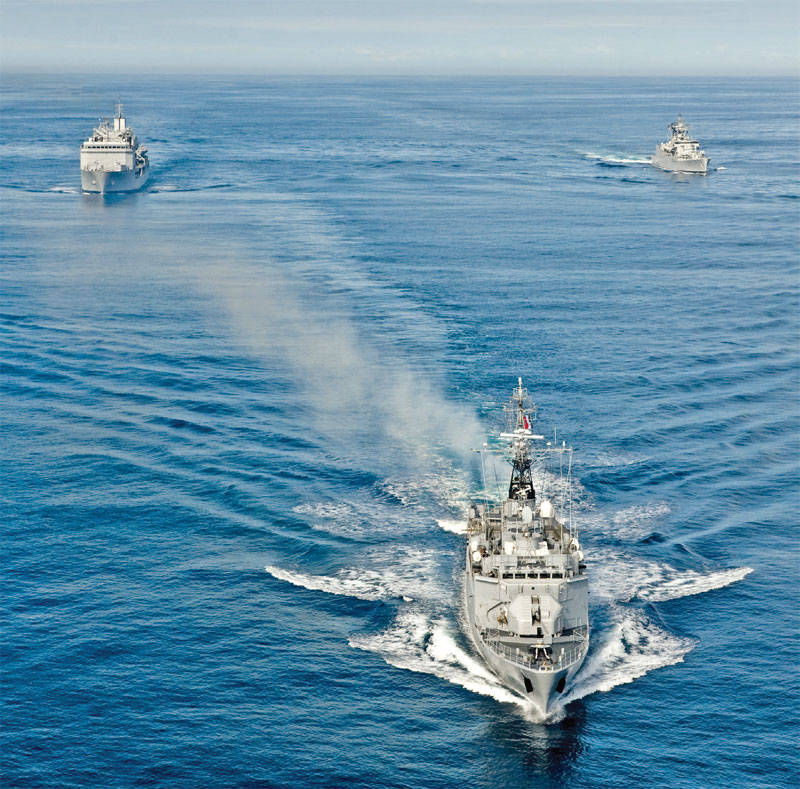Need Maritime Theatre Command to synergise capacities and capabilities
 RAdm. Sudhir Pillai (Retd)
RAdm. Sudhir Pillai (Retd)
The need for an overhaul of India’s ‘operational level’ military organisational structures has been identified repeatedly by various committees established in the aftermath of most military conflicts. The reports of the Kargil Review Committee, the Group of Ministers, the expert Task Forces (of 2001-2002) and those commissioned after the 26/11 Mumbai terror attacks (2008) are in the public domain. Each of these reports points to a disjointed approach to military security imperatives. These reports should serve to inform as to why such reform and transformation is essential.
The appointment of Gen. Bipin Rawat as chief of defence staff (CDS) on 1 January 2020 has seen the die being cast by Prime Minister Narendra Modi. Thus, a process of creating joint commands, in addition to the Strategic Forces Command and the Andaman & Nicobar Command established earlier, is underway. As the process gains steam, diverse perspectives emerge, threatening to delay or derail what can be crucial to reforming the Indian military establishment.
Military Organisational Jargon
Certain military organisational jargon from encyclopedia.com can help demystify. One could consider the World War II (WWII) invasion of Normandy, France, by the Allied forces in June 1944. The Allied strategic aim was to enter the continent of Europe and conduct operations into Germany to destroy its armed forces. The endeavour was one of:
- Coordinating land, naval, and air forces;
- Apportioning resources between them;
- Conducting military and political intelligence operations;
- Promoting cooperation and coordination between the participating Allied forces; and
- Planning ‘campaigns’ to be carried out over an extended period to destroy/ neutralise Germany’s armed forces.
Such endeavours involve apportioning of tasks and resources through three levels of organisation:
One, the strategic-level commander organised allied or national land, naval, and air arms among various operational commanders.
Two, the commanders at the operational level organised various tactical units under various tactical commanders. In the context of the landings at Normandy, the ‘operational-level’ tasks included:
- Apportioning resources to provide a balance between assault forces and follow‐on reinforcements;
- Providing for naval and air support of the landings on the beach;
- Coordinating the massive logistics requirements of the invasion;
- Ensuring proper command and control to react to enemy actions; and
- Planning the subsequent campaign for the breakout from the beachhead
Three, the commanders at the tactical level organised small units for landings and holding of assigned beaches. At a ‘tactical-level’, the role of land forces employed in the assault on the French coast was at its most basic, merely to get ashore, secure the beachhead, and hold the fort until relieved by reinforcements.
The Theatre Command
Dr Milan Vego, Professor of Joint Military Operations at the US Naval War College, has on occasions been schooling middle-level leadership at India’s Staff College and Naval War College. Terms from ‘Joint Operational Warfare: Theory and Practice’ needs wider reading, up the leadership ladder, as India evolves her military organisation for modern imperatives.
The term theatre is a geographic area of significant size that contains several potential strategic-level objectives. The route to selected strategic objectives is through intermediate decision points and defensively—or offensively—oriented operational/ tactical objectives, connected by lines of operations. Theatre geometry caters for various functional necessities.
- The concepts of a ‘theatre of war’ and ‘theatre of operations’ emerged because of the need to employ large forces effectively to accomplish operational or strategic objectives.
- Concurrently, subdivisions also got created, leading to the establishment of command echelons in a given
- The establishment of command echelons and command relationships depends upon the theatre structure and aims to clarify command and control arrangements in a theatre or sub-theatres.
- The conventional three-dimensional structure is flexible enough to accommodate the domains of cyberspace and space as modern battlespaces evolve with the march of technology.
The establishment of robust unified military organisations such as Theatre Commands (TCs) is closely linked to planning for and determining military objectives in times of conflict or emergencies and providing the command and control structures required to achieve military objectives. The organisational structures are also essential to coordinate theatre-wide functions such as intelligence, logistics, force and vital-area/ vital-point protections.

You must be logged in to view this content.

